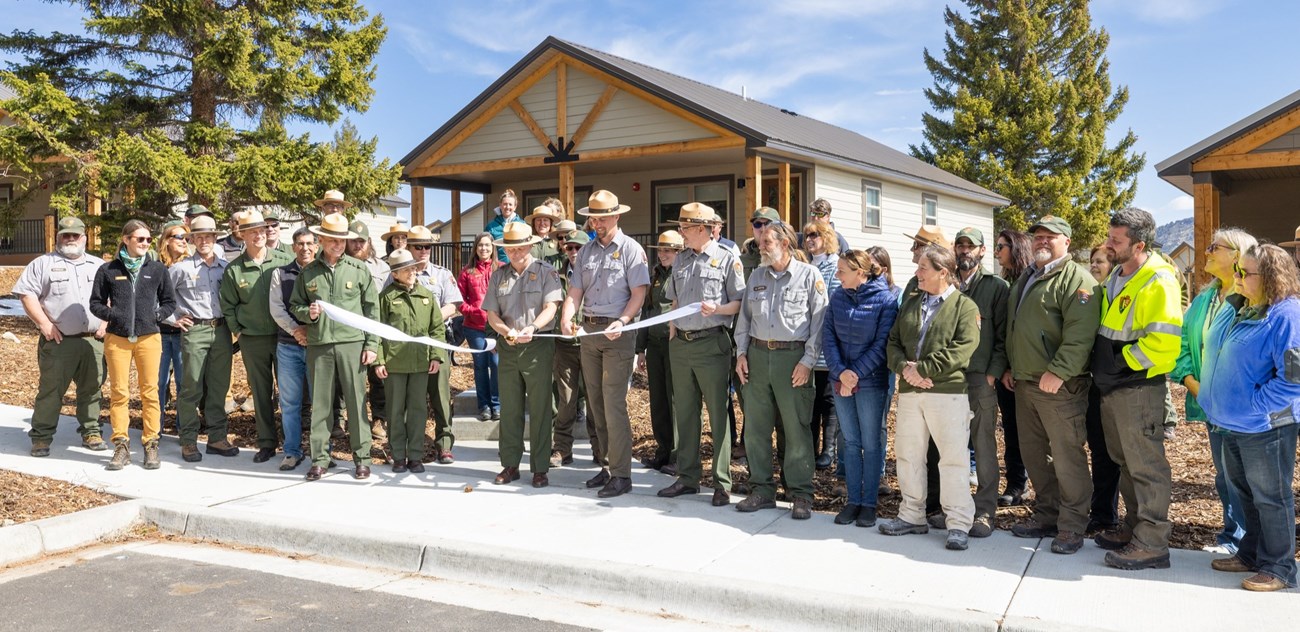
NPS / Jacob W. Frank Yellowstone is one of the largest national park operations in the world spanning 2.2 million acres and receiving over 4 million visitors each year. The park has a team of over 1,000 employees and volunteers, an annual operating and project budget exceeding $75 million, and infrastructure investments totaling $1.549 billion since 2020. Yellowstone is led by a superintendent and deputy superintendent who both have long, distinguished careers with the NPS. Yellowstone Offices These offices are integral contributors to the park's management, offering valuable insights into the roles, responsibilities, and collaborative spirit that define Yellowstone's stewardship.
The Office of the Superintendent has the ultimate responsibility for managing the resources and infrastructure within Yellowstone, a staff of nearly 1,300 NPS employees and volunteers, and an operating budget of approximately $70 million. The office promotes clear, consistent, accurate, timely, and engaging communication about the park and its Strategic Priorities through collaboration and alignment of staff and its many partners, including the gateway communities where visitors from the park spend an estimated $600 million in 2023.
This division oversees operations that support staff, including technology services, central warehouse operations, and the mail and copy room. Technology services maintain a highly complex network to support all forms of data and voice communication in Yellowstone’s remote environment. The warehouse and copy room ensure the delivery of critical supplies, property, and materials needed to operate the park. Youth Program staff provide multi-day in-park and outreach education programs to over 40,000 students and teachers each year and serve as liaisons with Yellowstone Forever Institute, the park's official education partner.
The Commercial Services Division manages the concession contracts and Commercial Use Authorizations of businesses that operate in the park. The division ensures that 1) commercial operations do not have adverse effects on park resources and values and 2) visitors have access to high-quality services so they can fully appreciate the natural and cultural resources in Yellowstone. Find out more about planning for commercial services, contract development, upcoming prospectuses, authorized concessioners, and the regulations surrounding these processes.
It oversees 68 concessions contracts that include nine hotels with over 2,100 rooms, 36 food services establishments, 12 general stores and gift shops totaling over 12,000 square feet of retail space, camping with over 1,400 campsites and 358 RV sites, 80 marina slips, eight gas stations, 23 oversnow operators, 40 guided saddle and pack stock outfitters, and bear spray rentals. In addition, the division issued 411 commercial use authorizations to approximately 290 businesses providing a variety of approved guided visitor services. This division oversees the operation and maintenance of Yellowstone’s $4.1 billion asset portfolio, including 1,735 buildings, 1,113 miles of trails, 469 housing units, 453 miles of roads, 61 road bridges, 23 wastewater systems, 21 water systems, 12 campgrounds, and an additional 217 assets. Daily operations ensure that park facilities can support the 4 million+ visitors that Yellowstone receives each year. In addition to daily operations, the division also coordinates with national NPS offices, additional government agencies, and contractors to oversee major infrastructure improvement projects in the park.
This division protects and preserves park resources through inspiration, education, and dialogue. It operates 13 visitor centers, museums, contact stations, and warming huts; offers a variety of ranger programs and manages the popular Junior Ranger program; produces short films and informational videos; manages the park website and mobile app; and produces publications, exhibits, and waysides to help visitors plan their trip and learn more about park resources and issues. This division also oversees Yellowstone's volunteer program and more than 500 volunteers.
This division oversees the safety and security for the park's visitors and its resources. Core functions include managing the Yellowstone’s Interagency Communications Center, emergency medical services, search and rescue operations, wildland and structural fire, and law enforcement. The division dispatches for nine agencies outside the park, operates a combined 22 ambulances and fire engines stationed across eight developed areas of the park, handles complex technical rescues of visitors, and coordinates with Yellowstone’s own U.S. Magistrate Judge and full-time Assistant U.S. Attorney.
This division centralizes the park’s efforts in natural and cultural resource conservation, research, and environmental compliance. Areas of interest include native species and the habitats and ecosystem processes that sustain them; the Yellowstone caldera and its geothermal features; climate change and its effect on visitor experience and infrastructure; air and water quality; natural soundscapes; vegetation communities; aquatic and terrestrial invasive plants; archeological sites; historic structures and cultural landscapes; museum collections, archives, and library collections; consultations with Native American nations; and visitation trends and their impacts to park resources, staffing and infrastructure, visitor experience, and gateway communities.
Priority Issues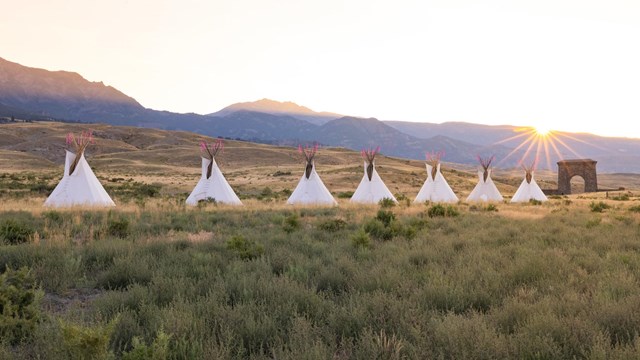
Strategic Priorities
Learn about the five major priorities set by park managers in 2019, each critical to the success of Yellowstone. 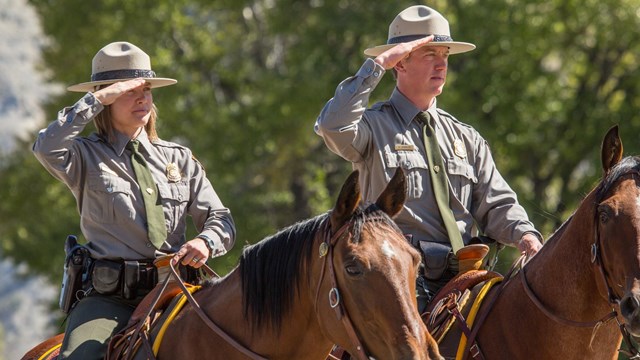
Laws & Policies
Learn about the laws and policies that guide the National Park Service in protecting and preserving Yellowstone. 
Aquatic Invasive Species Management
Learn more about how Yellowstone is working to stop AIS and how you can help. 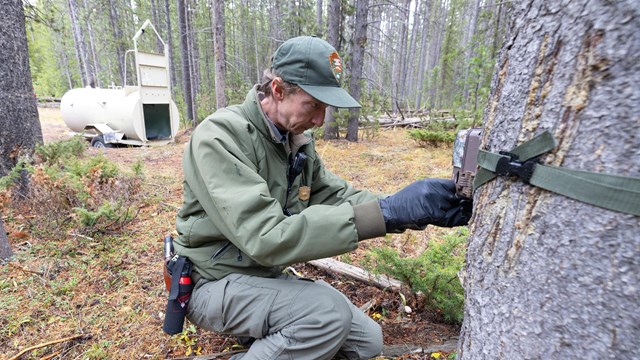
Bear Management
Learn how the park manages bears and the people who come to see them. 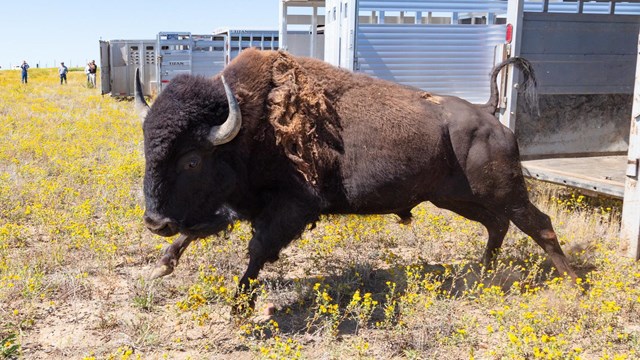
Bison Management
Learn how the park maintains a wild, migratory bison population in a modern landscape. 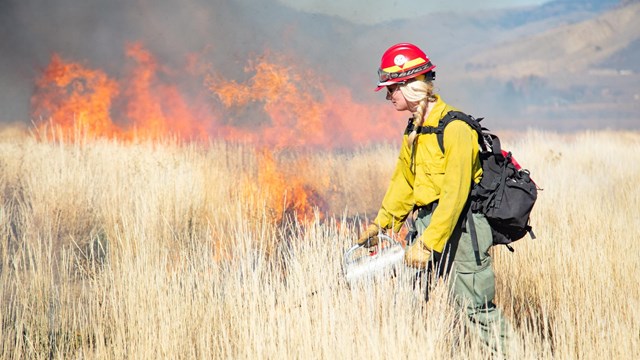
Fire Management
Learn how the park balances the benefits and threats of fire on the landscape. 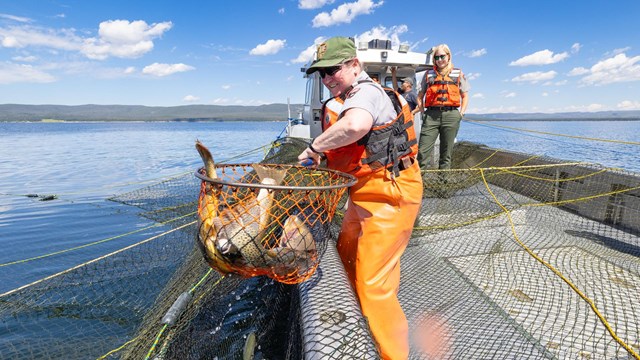
Fish Management
Learn how the Native Fish Conservation Program works to preserve Yellowstone Lake cutthroat trout and to restore fluvial trout populations. 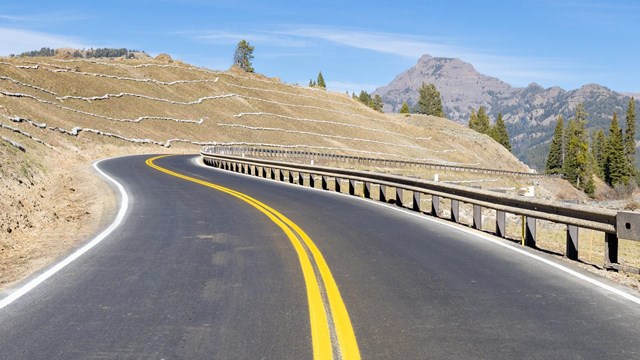
Flood Recovery & Operations
Learn about the substantial improvements to park infrastructure damaged in the 2022 flood event. 
Tribal Affairs & Partnerships
Yellowstone is the traditional shared homelands of many Tribal Nations whose traditions have shaped the landscape through generations. 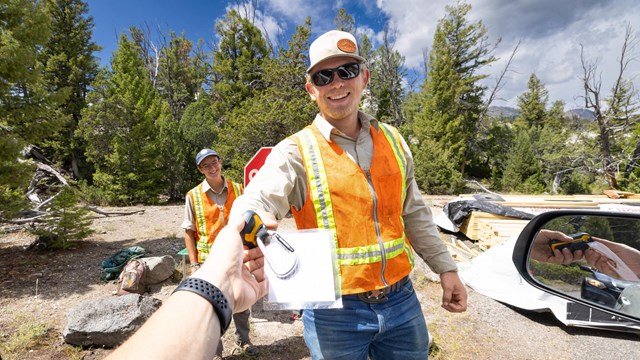
Visitor Use Management
Learn how the park is studying and responding to an increase of visitors in the last decade. 
Wolf Management
Long-term monitoring and research are vital for managing wildlife because ecosystems and species relationships are always changing. |
Last updated: May 16, 2025
